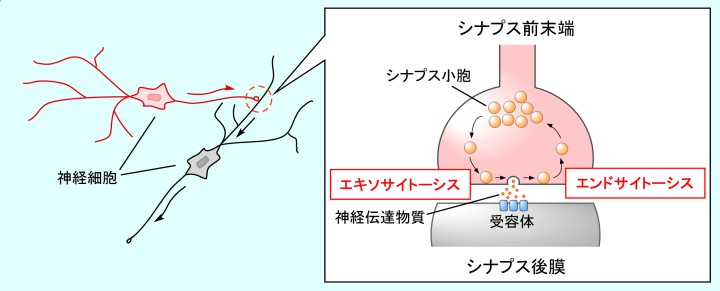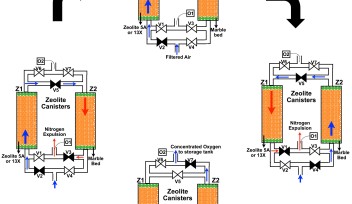Mechanism of Synaptic Transmission

Mechanism of Synaptic Transmission: Chemical neurotransmitter is stored in tiny membrane-enclosed compartments in the nerve terminal called synaptic vesicles. Upon an electrical signal reaching the synapse, the vesicles fuse into the nerve terminal membrane, causing the vesicle membrane to break open and neurotransmitter to be released – a process called exocytosis. The empty vesicles then return to their original nerve terminal by endocytosis and are refilled with neurotransmitter to be reused for another round of synaptic transmission – a recycling mechanism that enables long-lasting synaptic transmission.
Copyright OIST (Okinawa Institute of Science and Technology Graduate University, 沖縄科学技術大学院大学). Creative Commons Attribution 4.0 International License (CC BY 4.0).
Tags














